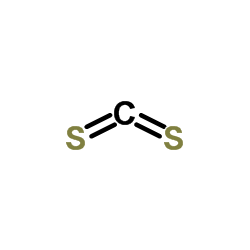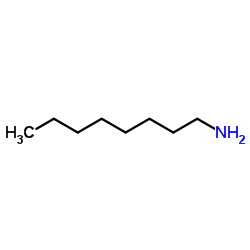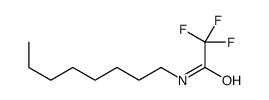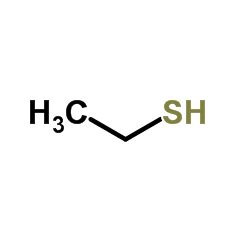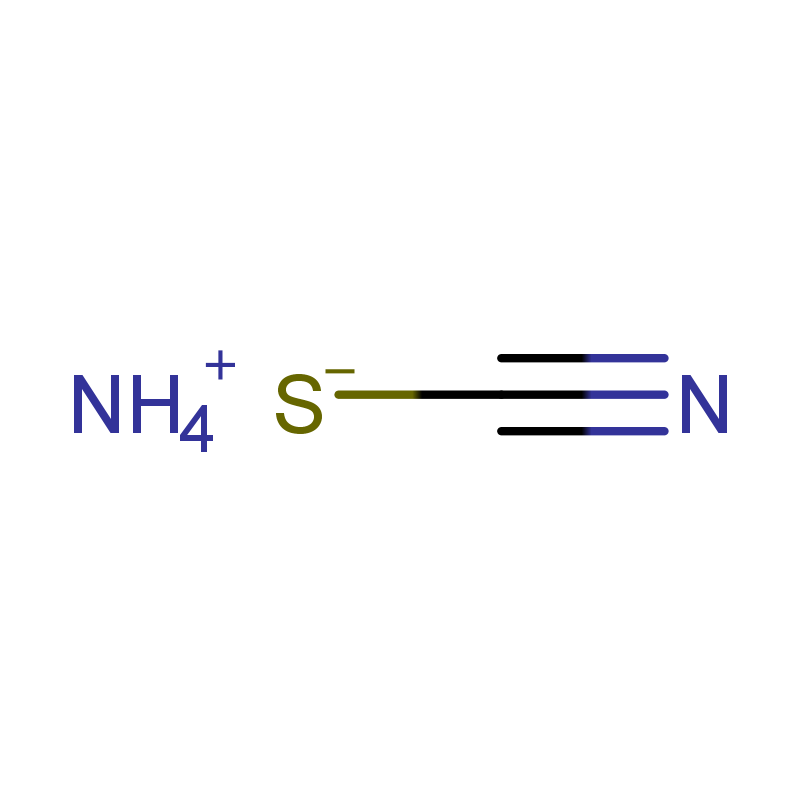octyl isothiocyanate

octyl isothiocyanate structure
|
Common Name | octyl isothiocyanate | ||
|---|---|---|---|---|
| CAS Number | 4430-45-9 | Molecular Weight | 171.30300 | |
| Density | 0.88 | Boiling Point | 125 °C (7 mmHg) | |
| Molecular Formula | C9H17NS | Melting Point | N/A | |
| MSDS | N/A | Flash Point | 94 °C | |
| Name | 1-isothiocyanatooctane |
|---|---|
| Synonym | More Synonyms |
| Density | 0.88 |
|---|---|
| Boiling Point | 125 °C (7 mmHg) |
| Molecular Formula | C9H17NS |
| Molecular Weight | 171.30300 |
| Flash Point | 94 °C |
| Exact Mass | 171.10800 |
| PSA | 44.45000 |
| LogP | 3.44970 |
| Index of Refraction | 1.49 |
Synonym: Section 2 - COMPOSITION, INFORMATION ON INGREDIENTS
Risk Phrases: 36/37 Section 3 - HAZARDS IDENTIFICATION EMERGENCY OVERVIEW
Irritating to eyes and respiratory system. Potential Health Effects Eye: Causes eye irritation. Skin: May cause skin irritation. Ingestion: May cause irritation of the digestive tract. The toxicological properties of this substance have not been fully investigated. Inhalation: Causes respiratory tract irritation. The toxicological properties of this substance have not been fully investigated. Chronic: Not available. Section 4 - FIRST AID MEASURES Eyes: Flush eyes with plenty of water for at least 15 minutes, occasionally lifting the upper and lower eyelids. Get medical aid. Skin: Flush skin with plenty of water for at least 15 minutes while removing contaminated clothing and shoes. Get medical aid if irritation develops or persists. Ingestion: Get medical aid. Wash mouth out with water. Inhalation: Remove from exposure and move to fresh air immediately. If not breathing, give artificial respiration. If breathing is difficult, give oxygen. Get medical aid. Notes to Physician: Section 5 - FIRE FIGHTING MEASURES General Information: As in any fire, wear a self-contained breathing apparatus in pressure-demand, MSHA/NIOSH (approved or equivalent), and full protective gear. Extinguishing Media: Use water spray, dry chemical, carbon dioxide, or chemical foam. Section 6 - ACCIDENTAL RELEASE MEASURES General Information: Use proper personal protective equipment as indicated in Section 8. Spills/Leaks: Absorb spill with inert material (e.g. vermiculite, sand or earth), then place in suitable container. Section 7 - HANDLING and STORAGE Handling: Avoid breathing dust, vapor, mist, or gas. Avoid contact with skin and eyes. Storage: Store in a cool, dry place. Store in a tightly closed container. Section 8 - EXPOSURE CONTROLS, PERSONAL PROTECTION Engineering Controls: Use adequate ventilation to keep airborne concentrations low. Exposure Limits CAS# 4430-45-9: Personal Protective Equipment Eyes: Not available. Skin: Wear appropriate protective gloves to prevent skin exposure. Clothing: Wear appropriate protective clothing to prevent skin exposure. Respirators: Follow the OSHA respirator regulations found in 29 CFR 1910.134 or European Standard EN 149. Use a NIOSH/MSHA or European Standard EN 149 approved respirator if exposure limits are exceeded or if irritation or other symptoms are experienced. Section 9 - PHYSICAL AND CHEMICAL PROPERTIES Physical State: Liquid Color: light yellow Odor: Not available. pH: Not available. Vapor Pressure: Not available. Viscosity: Not available. Boiling Point: 125 deg C @ 7.00mm Freezing/Melting Point: Not available. Autoignition Temperature: Not available. Flash Point: 94 deg C ( 201.20 deg F) Explosion Limits, lower: Not available. Explosion Limits, upper: Not available. Decomposition Temperature: Solubility in water: Specific Gravity/Density: .8800g/cm3 Molecular Formula: Molecular Weight: 171.30 Section 10 - STABILITY AND REACTIVITY Chemical Stability: Stable under normal temperatures and pressures. Conditions to Avoid: Incompatible materials. Incompatibilities with Other Materials: Strong oxidizing agents. Hazardous Decomposition Products: Carbon monoxide, oxides of nitrogen, oxides of sulfur, carbon dioxide. Hazardous Polymerization: Will not occur. Section 11 - TOXICOLOGICAL INFORMATION RTECS#: CAS# 4430-45-9 unlisted. LD50/LC50: Not available. Carcinogenicity: N-Octyl isothiocyanate - Not listed by ACGIH, IARC, or NTP. Section 12 - ECOLOGICAL INFORMATION Section 13 - DISPOSAL CONSIDERATIONS Dispose of in a manner consistent with federal, state, and local regulations. Section 14 - TRANSPORT INFORMATION IATA No information available. IMO No information available. RID/ADR No information available. Section 15 - REGULATORY INFORMATION European/International Regulations European Labeling in Accordance with EC Directives Hazard Symbols: XI Risk Phrases: R 36/37 Irritating to eyes and respiratory system. Safety Phrases: S 26 In case of contact with eyes, rinse immediately with plenty of water and seek medical advice. S 37/39 Wear suitable gloves and eye/face protection. WGK (Water Danger/Protection) CAS# 4430-45-9: No information available. Canada None of the chemicals in this product are listed on the DSL/NDSL list. CAS# 4430-45-9 is not listed on Canada's Ingredient Disclosure List. US FEDERAL TSCA CAS# 4430-45-9 is not listed on the TSCA inventory. It is for research and development use only. SECTION 16 - ADDITIONAL INFORMATION N/A |
| Hazard Codes | Xn: Harmful; |
|---|---|
| Risk Phrases | 36/37/38-20/21/22 |
| Safety Phrases | S36/37/39-S26 |
| RIDADR | 2810 |
| Packaging Group | III |
| Hazard Class | 8 |
| HS Code | 2930909090 |
|
~94% 
octyl isothiocyanate CAS#:4430-45-9 |
| Literature: Arisawa, Mieko; Ashikawa, Masanori; Suwa, Atsushi; Yamaguchi, Masahiko Tetrahedron Letters, 2005 , vol. 46, # 10 p. 1727 - 1729 |
|
~95% 
octyl isothiocyanate CAS#:4430-45-9 |
| Literature: Sun, Nan; Li, Bin; Shao, Jianping; Mo, Weimin; Hu, Baoxiang; Shen, Zhenlu; Hu, Xinquan Beilstein Journal of Organic Chemistry, 2012 , vol. 8, p. 61 - 70 |
|
~72% 
octyl isothiocyanate CAS#:4430-45-9 |
| Literature: Albanese; Penso Synthesis, 1991 , # 11 p. 1001 - 1002 |
|
~90% 
octyl isothiocyanate CAS#:4430-45-9 |
| Literature: Blotny, Grzegorz Liebigs Annalen der Chemie, 1982 , # 10 p. 1927 - 1932 |
|
~3% 
octyl isothiocyanate CAS#:4430-45-9 |
| Literature: Iranpoor, Nasser; Firouzabadi, Habib; Shaterian, Hamid Reza Phosphorus, Sulfur and Silicon and the Related Elements, 2005 , vol. 180, # 9 p. 2093 - 2096 |
|
~% 
octyl isothiocyanate CAS#:4430-45-9 |
| Literature: Blotny, Grzegorz Liebigs Annalen der Chemie, 1982 , # 10 p. 1927 - 1932 |
| HS Code | 2930909090 |
|---|---|
| Summary | 2930909090. other organo-sulphur compounds. VAT:17.0%. Tax rebate rate:13.0%. . MFN tariff:6.5%. General tariff:30.0% |
| n-Octyl isothiocyanate |
| n-butyl isothiocyanate |
| 1-Octyl isothiocyanate |
| 1-isothiocyanatooctan |
| MFCD00041139 |
| octylisothiocyanate |
| EINECS 224-625-5 |
| octanisothiocyanate |
| 1-isothiocyanato-octane |

